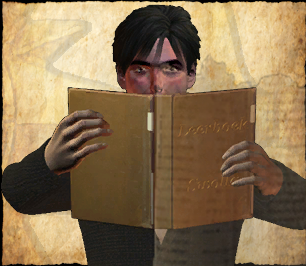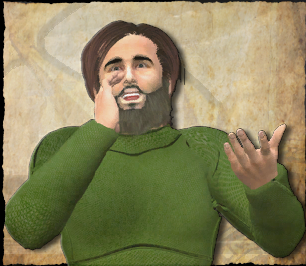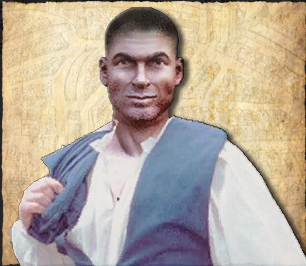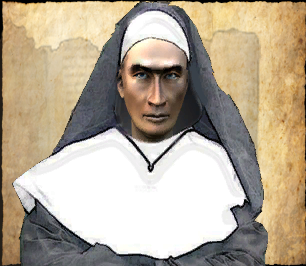
Hi, are you new here in Zwolle?
Let me introduce myself. I'm Jan, and the study behind me is the great school of Zwolle.
Will you be learning a trade here?
I will tell you something about education here in Zwolle.

Zwolle is an important educational center. The school is near the local parish church. The school was subordinate to the chapter of Deventer, but the city of Zwolle managed to make them separate.
In 1374, headmaster Johan Cele came in and the Latin school flourished. Johan Cele was a real education innovator. He emphasized building character over knowledge, completely in accordance with the principles of Modern Devotion.

He had extraordinary educational gifts, which he used mainly to educate his students on genuine piety.
He brought a whole new kind of education; a kind of precursor to grammar schools. Hundreds of students from the Netherlands, Germany, Flanders, and even France came to Zwolle to follow Johan Cele and his lessons.

Headmaster Johan van Dalen also greatly contributed to the flourishing of the school. Sometimes the school has had 800 to 1,000 students!
In 1443 it was decided to build a new, separate building for the famous educational institution. At that time it was still located on the corner of Voorstraat and Luttekestraat. Johan Cele's new kind of education was widely known.

At that time the Latin school directed much attention not only to Latin, but also to music in the form of church singing.
For example, the students here have to go to church at six, seven, and nine in the morning to sing Gregorian chant.

Most of them live in the friar houses. In fact, the Brethren of the Common Life earn their bread partly by providing for the students' shelter and expenses.
It was obvious that some tenants were causing difficulties. Hence, provisions were introduced that prohibited the students from drinking beer, and from traveling the streets without a lamp after the bell rang.
Also, they could not carry long knives or other weapons. These provisions in 1460 were the result of an infamous massacre of students in 1459.

On April 2nd, 1459, around nine o'clock in the morning, a student named Geert van Loe came to the friar house. He took his fellow townsman, the Maastricht student Reinier van Honthorst, to go with him to his room in the city.
But within the hour, he was back at the friar house, supposedly at the request of Reinier to retrieve all his money and property. As proof, he let the procurator of the friar house, Father Rutger van Doetinchem, see Reiner's key. The gullible Father fulfilled the request, and no one paid mind to him for a long time.

Only after Geert van Loe had left, and Reinier didn't show up in Zwolle later, did they become suspicious.
Six weeks after Geert van Loe's departure, they found a suitcase in his boarding house in which they found the dismembered corpse of Reinier van Honthorst.
The sheriff of Veluwe succeeded in arresting Geert van Loe in Arnhem. The sentence he received is still unknown.

So now you're aware of the events in the area! Ha ha.
Have a nice day, and maybe I'll see you soon at school.



